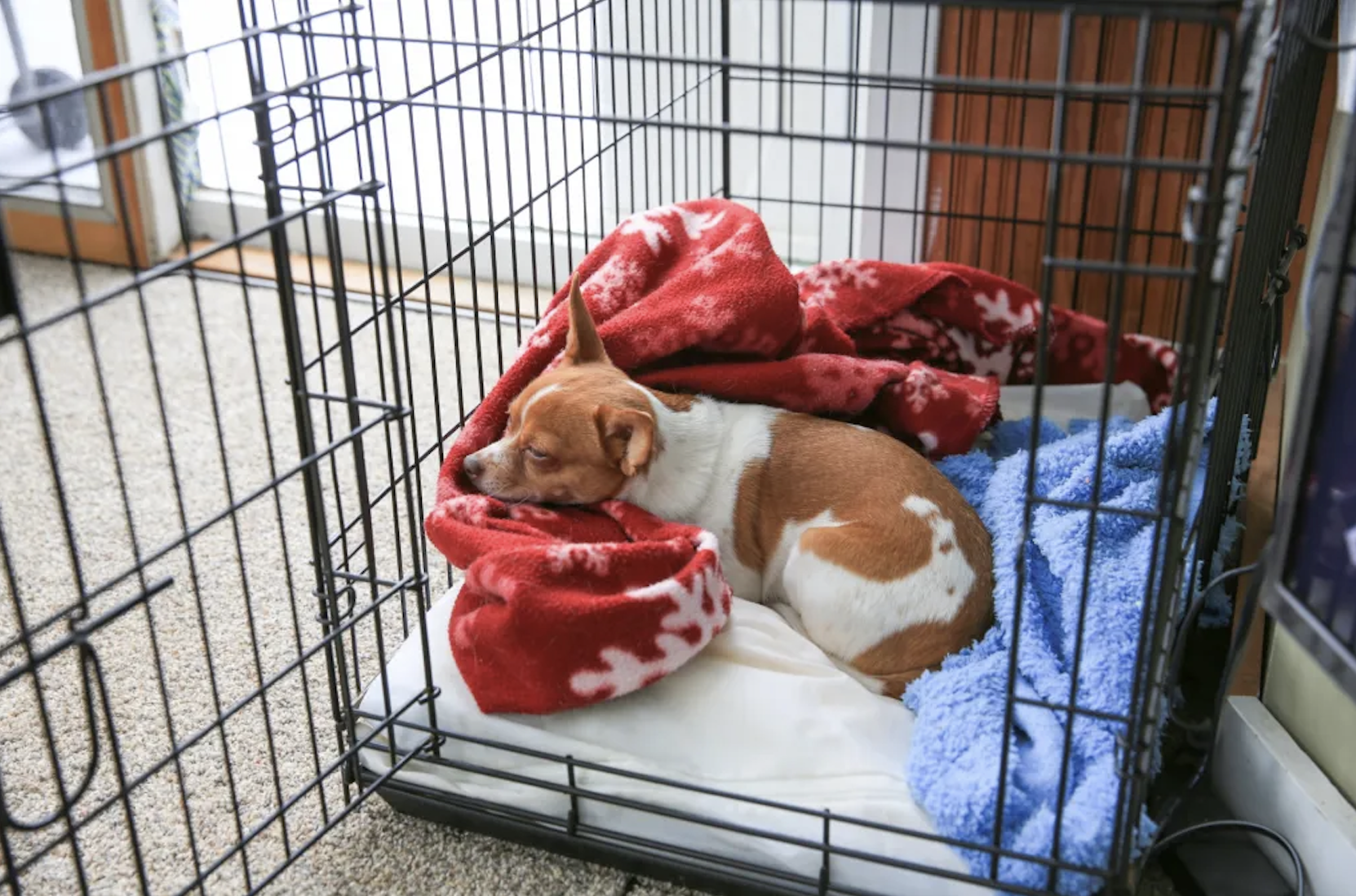Tips and Tricks for Crate Training Your New Rescue Dog
When adopting a dog, it is essential that you provide them with their own safe space. This is where crate training comes in handy. Though it may feel like you are “caging up” your dog, crates provide rescued dogs with a safe space to adjust to their new surroundings and the luxury of not having to share their own space. Dogs are naturally den animals, so most enjoy being in small, enclosed places to provide security and calm anxiety. Not only is crate training excellent for providing comfort to your dog, but it can also be a helpful tool in potty training. Like any behavior you want to stick to, crate training requires consistency and patience but is well worth it in the long run!
9 Key Steps in Crate Training Your Dog
Step 1: Choose the Right Crate for Your Dog
Finding the best crate for your dog is step one in successfully crate training. Crates should be durable and comfortable for your dog. For dogs who prefer to sleep in the dark, using a kennel or airline crate (which are enclosed) might be best, while wire crates work best for other dogs. A critical aspect of finding the right crate is size, as you do not want to buy a crate that is too big or too small for your dog. Depending on how big your dog is predicted to be, you should buy the right crate for their adult size and get a divider while they are smaller.
Step 2: Establish and Maintain the Proper Mindset
The more dogs associate the crate with a relaxed mindset, the more they will enjoy hanging out there. If you put your dog in the crate while they are actively playing, they will want to return to continue playing. If you guide your dog into their crate when calm, they will be more likely to view it as a place of rest.
Step 3: Figure Out How Your Dog Will be Most Comfortable
Many people use dog beds, towels, and or blankets to create a comfortable environment in their dog’s crates. Though this can be a great way to make your dog feel cozy and safe, it might not always be the best option. Depending on your dog, they might chew up or pee on blankets and beds in the crate. If this is the case, it is absolutely ok for dogs to sleep on the crate mat. Many dogs actually do prefer hard surfaces.
Step 4: Positively Reinforce your Dog After They Go Into The Crate
Treats, treats, treats! Positive reinforcement is vital for training your dog. One good technique for creating a positive association with the crate is to give your dog a small treat every time they go into their crate. Another good trick is to give your dog a frozen KONG toy filled with peanut butter while hanging out in their crate. This will stimulate them as they have to get the frozen peanut butter out of the KONG. It will also help get your dog used to being in the crate for more extended periods of time while associating being in the crate with a positive, fun, and yummy treat.
Step 5: Watch the Time
Though the crate is great for short periods of time, you do not want to keep your dog in there too long. Your dog needs time outside the crate to play, eat, and use the bathroom. Dogs try to avoid using the bathroom where they sleep, but if they have been there too long, they might have to go. You want to try and prevent accidents in the crate.
Step 6: Play Crate Games
Back again with positive reinforcement! Another good trick to make your dog enjoy crate time is incorporating fun games as they go in and out of their crate. For example, if your dog likes to fetch, throw their ball into the crate and have them retrieve it there. If your dog isn’t big on fetch, you can hide treats in their crate for them to search for.
Step 7: Avoid Collars and Tags in the Crate
Though it may seem tedious, removing collars or tags from your dog before they enter the crate is best. This is purely for safety. If the tag gets caught in the crate, your dog could strangle.
Step 8: Set Your Dog Up for Success
Always give your dog a potty break before putting them in the crate, and don’t forget to take them out again immediately after letting them out. This will help with potty training and preventing accidents in the crate and house. Take all the training in small steps. When you first start crate training your dog, keep them in their crate for small increments of time. Don’t leave them in their crate alone in the house for several hours. Start with 10 minutes and go up from there.
Step 9: Be Patient
Training takes time! Prepare yourself for at least six months of training. There will be ups and downs because dogs aren’t linear learners, but with consistency and patience comes success.
We wish you the best of luck crate training your new rescue!





